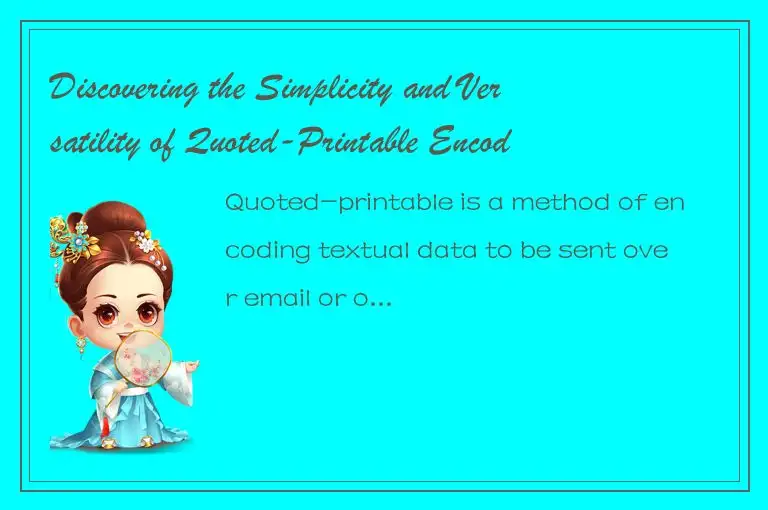Quoted-printable is a method of encoding textual data to be sent over email or other messaging systems that aren't able to handle all types of characters. It's a simple and versatile option that is widely used to transport text with ease.

Let's begin by understanding what encoding is. Encoding is the process of converting information from one form to another, so that it can be used by another computer or program. It is used when data is being transferred between different systems that may use different character sets or encoding schemes.
Quoted-printable is one of many encoding schemes, but it has some distinct advantages. It is particularly useful when we want to send a message that contains special characters, such as accented letters, symbols, or emojis. In these cases, quoted-printable comes in handy because it can encode these characters, allowing them to be sent over email with ease.
The basic idea behind quoted-printable encoding is to represent non-ASCII characters as ASCII characters. ASCII is the American Standard Code for Information Interchange, and it is a standard character set that includes 128 characters, including letters, numbers and symbols. The first 128 characters in the Unicode character set are the same as in ASCII, but Unicode includes many additional characters.
The ASCII characters include letters from A to Z, numbers from 0 to 9, as well as punctuation marks and other symbols. Because of the limitations of ASCII, we can't send all characters over email - there isn't enough room.
To send non-ASCII characters using quoted-printable encoding, we use a special character - the equals sign (=) - to signal that the next two characters should be interpreted as hexadecimal digits. Hexadecimal numbers are base 16, which means that they use 16 digits instead of 10 (0-9) like the decimal system. Hexadecimal digits represent numbers from 0 to 15, and they are represented by the digits 0-9 and the letters A-F.
So, if we wanted to encode an accented letter like "é", we would use the corresponding hexadecimal value. The hexadecimal value of "é" is 0xE9, so we would represent that as "=E9" in quoted-printable. The equals sign tells the decoder that the next two characters are hexadecimal digits representing a single character.
Another advantage of quoted-printable is that it can be used to send messages with line breaks. Some email systems have a limitation on the length of the lines in an email, and quoted-printable helps to get around that limit. Instead of sending a long line of text, quoted-printable breaks it up into shorter lines that are easier to handle and display. The line break is represented by "=0D=0A", which stands for a carriage return and a line feed.
Quoted-printable isn't just for email, though. It can be used in many other circumstances where non-ASCII characters need to be sent. For example, it can be used for web pages, where non-ASCII characters can be displayed incorrectly if the encoding is not properly set. By encoding the pages using quoted-printable, any non-ASCII characters can be safely transported and displayed.
Overall, quoted-printable is a simple and versatile encoding scheme that is widely used today. It's easy to use, and it helps to ensure that messages are transmitted correctly regardless of the character set. By understanding how it works, we can ensure that our messages are delivered accurately and that they are displayed correctly on any device.




 QQ客服专员
QQ客服专员 电话客服专员
电话客服专员